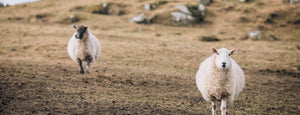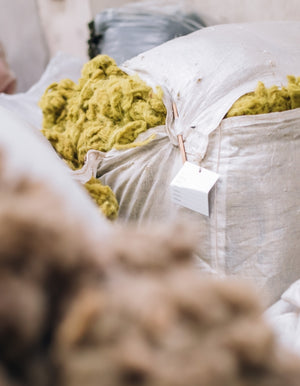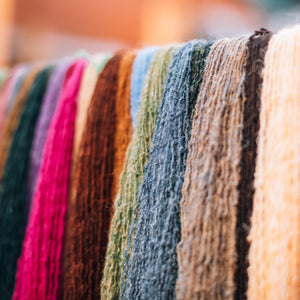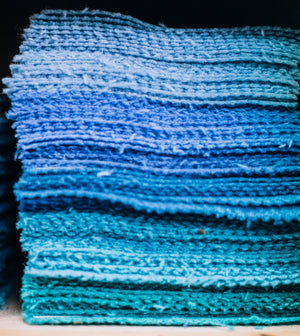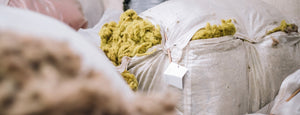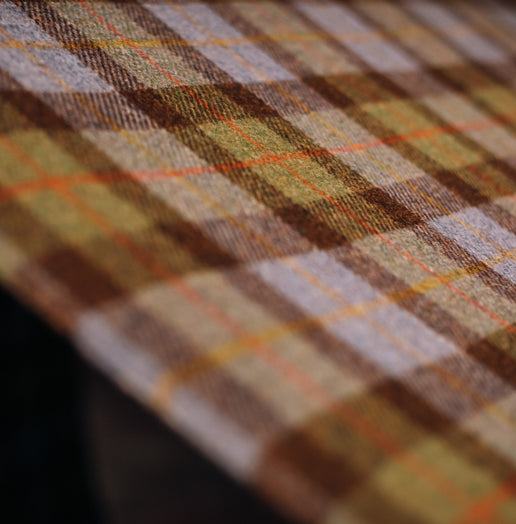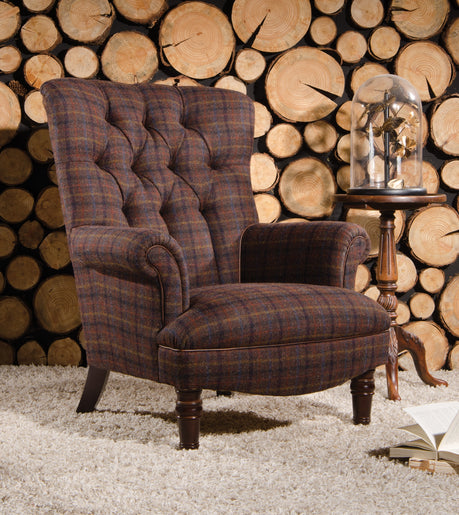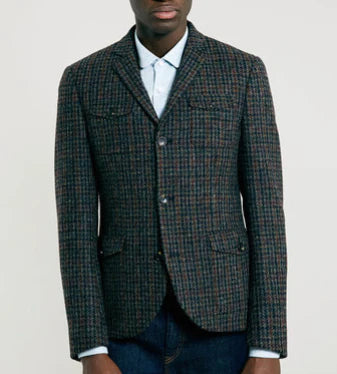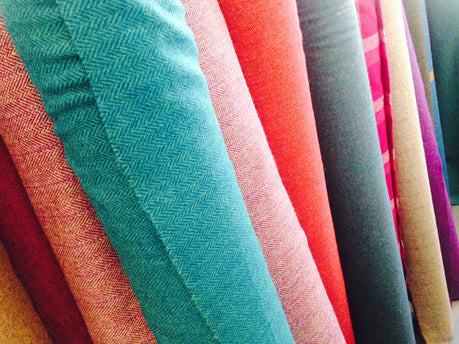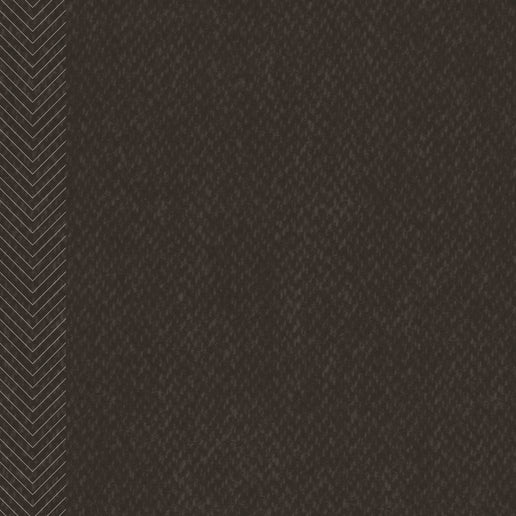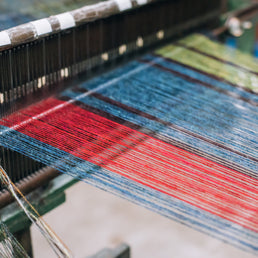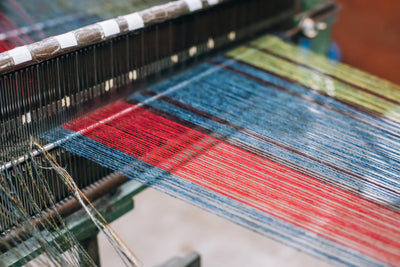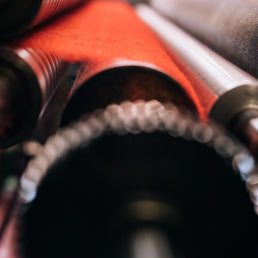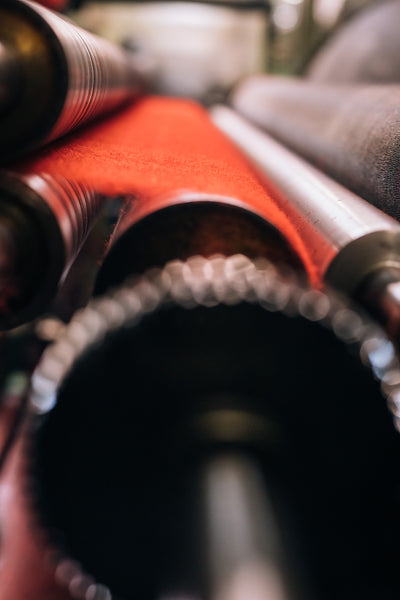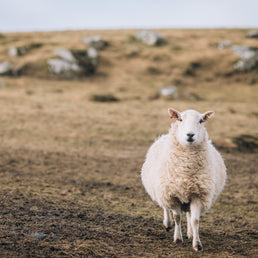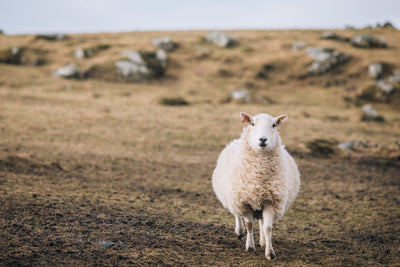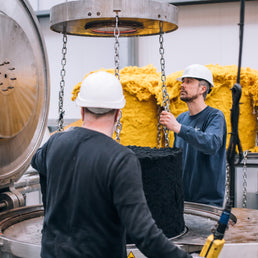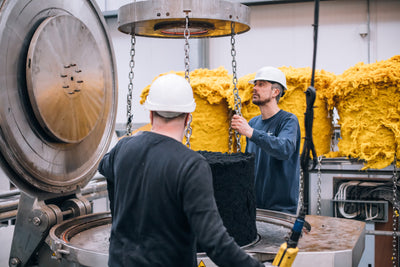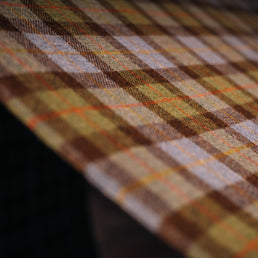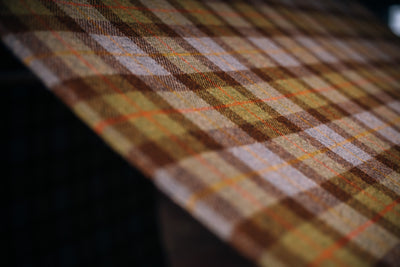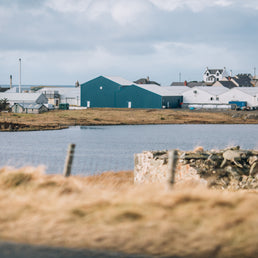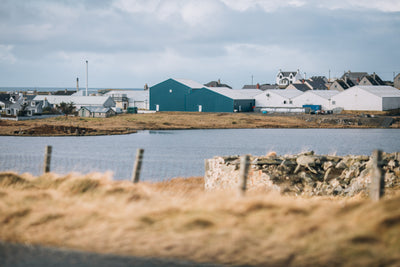
A mention of Harris Tweed invariably brings to mind romantic images of the lone weaver, clacking and rattling away rhythmically in his loom shed as another beautiful swathe of cloth is slowly revealed.
Artisans and craftsmen, all. But while these weavers are rightly synonymous with the name Harris Tweed, they are not the only ones involved in producing this luxury fabric so desired by the finest fashion houses, such as Yves Saint Laurent and Chanel.
In fact, the weavers who create the famous Clo Mòr are really only one link in the chain. The chrysalis-like transformation of the raw wool into such jewels of fabric actually begins and ends in the Harris Tweed Hebrides mill in Shawbost on the Isle of Lewis.
The processes that take place here - specifically the dyeing, blending, spinning and finishing - are protected and guaranteed by the Harris Tweed Act 1993 just as much as the actual hand weaving. The Act states that only fabric genuinely “handwoven by the islanders at their homes in the Outer Hebrides, finished in the Outer Hebrides, and made from pure virgin wool dyed and spun in the Outer Hebrides” can call itself Harris Tweed and bear the famous Orb trademark.
Once the sheep have been sheared and the bales of wool delivered to the mill, the production process can properly begin. It is on the Dye House that our curtain rises, with mill workers John Angus Reid and Calum Murdo ‘Dodo’ Macleod the first actors to step onto the stage.
A simple combination of heat, water, agitation and dye products is what turns the pure wool into deep, rich colours and once John Angie and Dodo have got their hands on the 350 kilo wool bales, they must then measure out the potions they need very precisely.
There are around 70 solid colours to choose from and with each having their own formula or ‘recipe’, care is taken at every stage.
There are two giant pots in the dye house. One takes about 350 kilos of wool; the other about 100 kilos. The big pot, although it can be used for colours as well as the smaller pot, cooks black wool more often than not. As solid black features in 60 to 70 per cent of yarn made, it is the most frequently required base colour in Harris Tweed Hebrides’ unique yarn blends.
Once a pot has been loaded with its wool, potions and water, it is heated for about an hour. Then it is into the hyrdo-extraction ‘spinning’ and drying machines.
The whole process takes several hours, with at least a handful of batches done every day.
As well as accuracy, a keen eye is essential. The dyers compare the wool in the pots to their colour samples, making allowances from their experience for the difference between wet wool and dry wool.
Naturally, they have their favourites. “I quite like the New Orange,” said John Angie (pictured). “It’s quite nice.” Paris Pink and Peacock Blue also get a mention.
Maybe all these lovely bright colours have their effect on the psyche, too, with John Angie a man who is clearly happy in his work.
“It’s a good place to work. There’s a nice atmosphere. And I like the fact that it’s something a bit different. It’s pretty fascinating and it can be intricate. There’s all sorts of weighing out. It’s like cooking, almost - for every colour there’s a different recipe.”

Obviously, the art of colouring has moved on somewhat since the days of crottle, but colour is just as important today as it ever was. And the dyeing of colours only at the wool stage – colours which are then blended together - has remained unchanged in all the years Harris Tweed has been made.
Only after the colouring will the wool be teased and blended, where another type of recipe will be followed - this time, the weighing out of predetermined portions of pure wool colours which are mixed together to create a yarn’s exact hue or character.
From there it is on to carding and spinning, where the fibres are teased and combed by metal rollers before being spun into a single ply yarn of workable strength.
This process is what gives even the ‘plain’ Harris Tweeds their distinctive flecks and depth of colour.
Harris Tweed Hebrides Brand Development Director Margaret Ann Macleod said: “Dyeing at the fibre stage is particularly important to ensure we get the intensity of colour in our yarn that’s a true characteristic of Harris Tweed.
“The vibrancy of our wool colour then goes on to create our blended yarn colours which are crafted into beautiful fabrics by our weavers.
“Harris Tweed Hebrides always dye at the wool stage of the process rather than dyeing our yarn which would result in flat colours. This is one of the key areas covered by the Harris Tweed Act which has helped to preserve this process as an essential part of creating Harris Tweed cloth.”
She added: “The dye house has quite a distinctive smell, which people love. You know you’re in the dye house when you get the smell of wet wool.”
Indeed, for those who work at the mill, a cuairt* around each stage of the production process is an experience for pretty much all the senses. The carding and spinning machines next to the Dye House can make quite a racket and next door again there is a visual treat to be had in the yarn store and warping area.
Here, the crucial and intricate work of loading thousands of warp threads - in the right order – onto weaver’s beams is carried out. These beams are then delivered to the weavers along with the yarns for the weft - and it is only after all this has been done that the famous clacking and rattling can begin.
*Clo Mòr (Gaelic) – Big Cloth (Harris Tweed); * cuairt (Gaelic) - trip or walk



